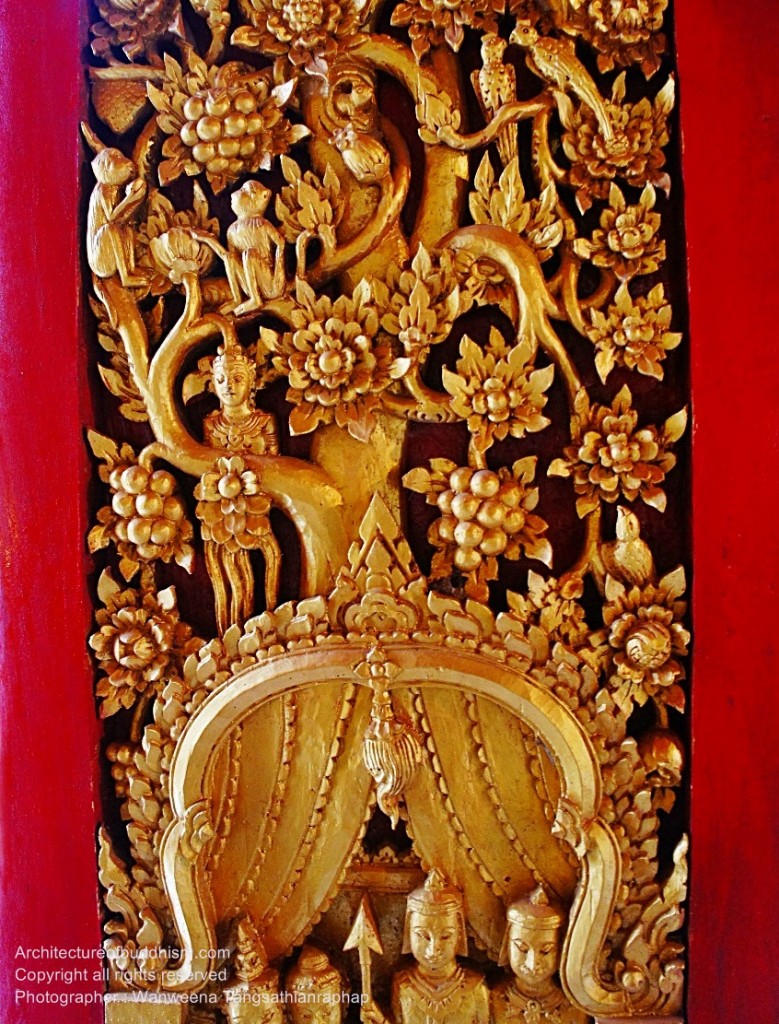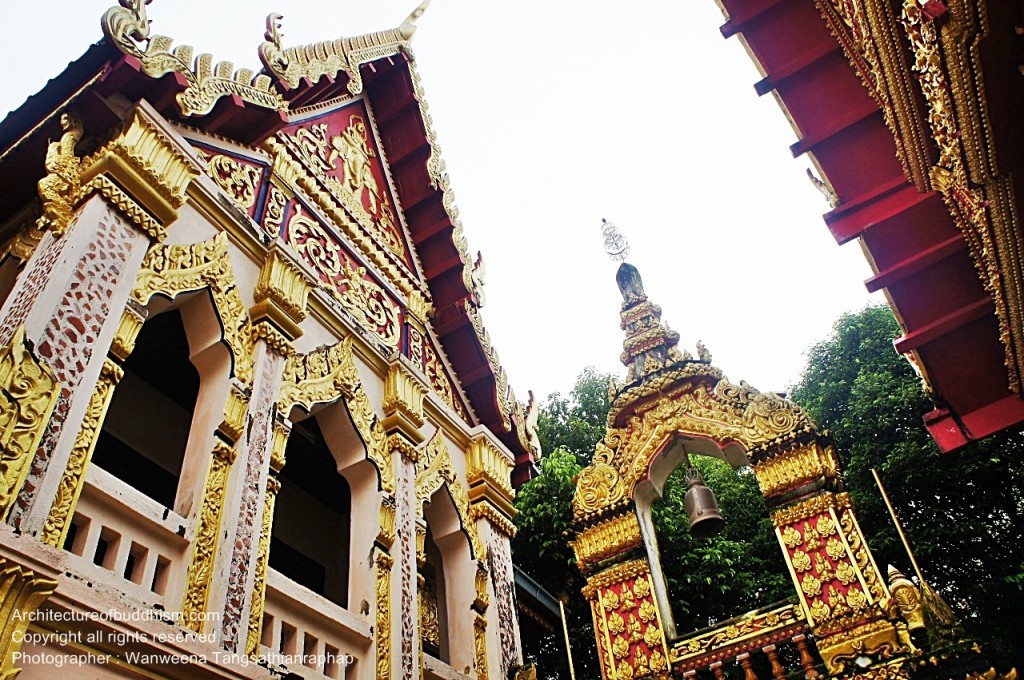Located by the Mekong River not far from the Indochine market in the municipality, Wat Okat Si Bua Ban or locally known as Wat Okat, is one the most important temples in Nakhon Phanom, Thailand. The sacred temple has been honored since ancient times and is regarded today as the iconic temple of Nakhon Phanom.
The temple houses two ancient Buddha statues ‘Phra Tio’ and ‘Phra Thiam’, which are situated together. Phra Tio, 60 cm. high, was carved from ‘Tio’ wood and later covered with gold plate.

Legend and Architectural Background
The Buddha image was built by the King of Si Kotrabun in the year 785. First there was only Phra Tio, but later Phra Thiam was built as an imitation. (Thiam means imitation in Thai; the current is itself a copy of this first copy, see below). Legend said that Phra Thiam was built to replace Phra Tio that had been understood to have been accidentally lost to fire during the reign of King Kattiyawong in the 15th Century. However, a few years later, local fishermen miraculously found Phra Tio floating in the Mekong River, so they brought it back to the city. Knowing that the Buddha statue was returned, the King was very glad and wishing to venerate the statue, he donated 30 kg of gold to cover the body of Phra Tio and placed it inside the chapel.

Phra Tio is always on the right hand of Phra Tiam. So if you turn your face toward the chapel, Phra Tio is on your left hand. You can also differentiate the two statues by noticing carefully the material building them. Phra Tio is made of Tio wood covered with gold plate, while Phra Tiam is lacquered with gold leaf.

Highlights
Apart from the ancient Buddha statues, the murals and painted pillars inside the chapel are richly decorated and very attractive. Each corner was painted with colorful pictures of angels watching over the Buddha statues. Each wall was depicted the story of the lord Buddha’s former births tales. The ceiling was painted in red with golden start glittering around. Another interesting spot are those several carved wooden window shutters featuring nareepon or fruit maiden.


How to get there
The temple is within walking distance from the city center. You can either walk there from the hotel or rent a bike to travel around. It is the first temple next to the Indochine market.

Best time to visit
The temple is open all year round. However, those who expect to participate the grand worship festival can visit during the full moon of the 6th lunar month. Both Buddha images are brought out of the chapel and flocked around the town.
Opening Hrs. : 08.30 – 16.30

Writer’s Note
The current Phra Tiam is a replica because the original was stolen in 2010. The real statue has not yet been discovered. However, local people today still pay homage to the new Phra Tiam like they did in the past.
Looking up to the temple ‘s pediment, you will see one outstanding symbolic decoration. It is the symbol of The Royal Crest Commemorating the Sixth-Cycle (72nd) Birthday Anniversary Of His Majesty King Bhumibol Adulyadej. The symbol has been in place since the year 1999 to honor the King and the temple.

After visiting Wat Okat, you can also visit other temples nearby. Rent a bike for a day and you can cover many historical sites and temples. The main temples can be found next to the River, giving a view you cannot find in other provinces. One of the main chedis, Pratat Nakhon, is also located in the municipality area not far from Wat Okat. Although it is not as grand as Pratat Phanom, its shape is a replica of the former. Various Buddha postures can be seen around the main chedi.
With many temples in the province, Nakhon Panom has been known by many Thai for as one of the top sites to pilgrimage. It is admired by many Thai folks as a destination for retirement and for living life with peace and mindfulness.
Story and photo by Wanweena Tangsathianraphap



